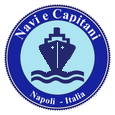 |
|
 |
|
Sommergibile
|
|
Submarine
|
||
|
LAZZARO
MOCENIGO
(Semper paratus - Sempre pronto) |
||||
| Bandiera | Flag | Italiana - Italian | ||||
| Armatore | Owner | Marina Militare Italiana - Royal Italian Navy | ||||
| Varo | Launched | 26.07.1919 | ||||
| Entrata in servizio | In service | 1919 | ||||
| Cantiere navale | Shipyard | Cantieri Riuniti dell'Arsenale - La Spezia - ITALY | ||||
| Costruzione n. | Yard number | |||||
| Tipo di scafo |
Hull type | doppio scafo - double hull | ||||
| Nominativo Internazionale | Call Sign | |||||
| I.M.O. International Maritime Organization | ||||||
| M.M.S.I. Maritime Mobile Service Identity | ||||||
| Numero d'identificazione | ID Number | M O | ||||
| Porto di base | Home Port | La Spezia > Taranto | ||||
| Stazza lorda | Gross Tonnage | |||||
|
Dislocamento |
DWT | 842 Tonn | ||||
| Dislocamento in immersione | DWT submerged | 1.244 Tonn | ||||
| Lunghezza max | L.o.a. | 63,20 m | ||||
| Larghezza
max |
Breadth max | 6,20 m | ||||
| Altezza di costruzione | Depth | |||||
| Pescaggio | Draught | 4,60 m | ||||
| Motore principale termico | Main Engine | 2 - Fiat diesel | ||||
| Motore elettrico | Electric engine | 2 - Ansaldo | ||||
| Potenza Motori | Engine Power | diesel 2.600 hp - elettrci/electrics 1.308 hp | ||||
| Eliche di propulsione | Propellers | 2 - | ||||
| Velocità massima | Max speed | superficie/surface 14,5 kn - immersione/submerged 11,0 | ||||
| Armamento | Armament | 4
tubi lanciasiluri a pr /torpedo launchers fore 450
mm 4 tubi laciasiluri a poppa /torpedo launchers aft 450 mm 2 - cannoni/guns 276/30 |
||||
| Strumentazioni
elettroniche |
Electronic
equipments |
|||||
| Autonomia | Range | superficie/surface
945 nm a/at 14,5 kn immersione/submerged 180 nm a/at 3,0 kn |
||||
| Profondità operativa | Depth | 50 m | ||||
| Equipaggio | Crew | 40 - 4 ufficiali/officers + 36 sottufficiali e marinai/pretty officers and sailors | ||||
| Unità gemelle | Sister ship | |||||
| Radiato | Radiation |
10.04.1937
|
||||
| Inserita |
Posted |
03.03.2011
|
||||
| Aggiornata | Last updated |
03.03.2011
|
||||
|
INFORMAZIONI
STORICHE I
dati e le informazioni indicati nella pagina sono stati riportati
dai siti: Marina Militare Italiana,
Museo della cantieristica.
|
||||||